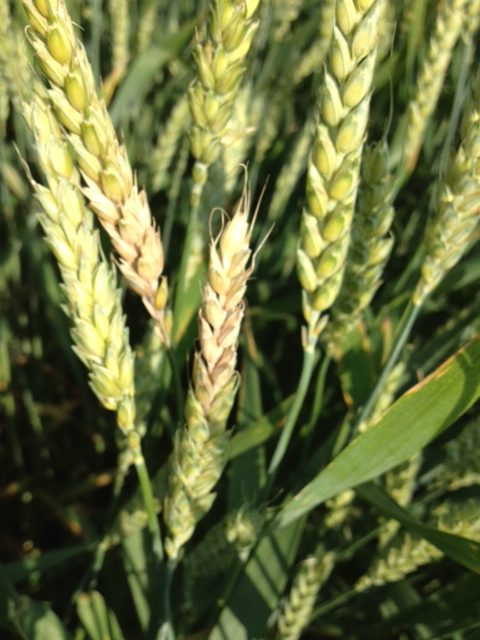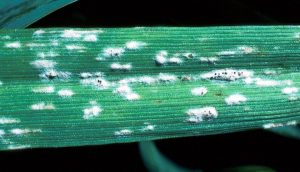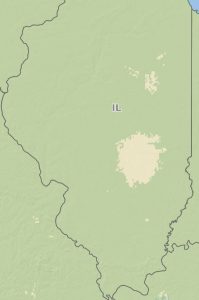Wheat in the southern part of Illinois is approaching heading or just headed, which means that flowering will start within 4-5 days, depending on temperature (heads produce small yellow anthers-(Figure 1)) Vomitoxin (DON) can accumulate in the absence of significant visual symptoms, and thus that is often the focus of my Fusarium head blight (FHB) recommendations. Why? Because pink or lightweight, FHB-infected kernels can be cleaned at the elevator, but plump, healthy kernels containing DON cannot. This reduces the overall quality of the grain and ultimately, grower profits in the long run.
In order to understand how to manage DON, you need to realize that FHB is a fungus that overwinters not only on wheat residue, but also corn (and to a lesser extent soybean) residue. When conditions are wet and warm during the flowering period, FHB infections are most severe. Experience indicates that if sufficient rain falls and cool temperatures occur, FHB outbreaks are still a possibility. The wet conditions “wake up” the fungus, and it starts to produce spores and spore bearing structures on residue. These spores can be rain dispersed locally or forcibly ejected. The latter spores can travel several miles and settle onto heads via atmospheric deposition during calm nighttime periods. When spores land on heads that are flowering, they germinate and infect wheat heads. The fungus can can infect individual spikelets (Figure 2) and or the rachis (the stem where the spikelets attach). Colonization of the rachis can impede movement of water and nutrients and result in dry or bleached heads above the point of infection (Figure 3). You may see an orange to pink growth on infected spikelets (Figure 2). DON can be produced by the fungus after infection, typically following alternating wet and dry periods before harvest.
During the season FHB can be SUPPRESSED by making an application of either Caramba, Miravis Ace, Prosaro, or Proline from the start of flowering (Feekes FGS 10.5.1, when approx 50% of MAIN tillers have started to flower) through six days after this point in time. Replicated university trials still confirm that this is the best application window to target for FHB and DON suppression, regardless of product. The Fusarium head blight prediction center can be used to help you decide if a fungicide application for suppression of FHB is warranted.
Between seasons you should be selecting a high yielding, moderately FHB resistant variety . The combination of a moderately resistant variety and a well timed FHB fungicide application can reduce FHB by over 70% on average.
Other things you can consider for further suppressing FHB: Plant wheat after soybeans because the pathogen does not grow as well on soybean residue or tillage to bury residue. Both practices can reduce local inoculum but will not impact deposition of spores from distal sources.
It has been wet, but cool and most of the crop has yet to reach the critical time for FHB infection. Continue to monitor the FHB prediction center as your crop approaches flowering to determine if fungicide applications are needed in your fields this season.






